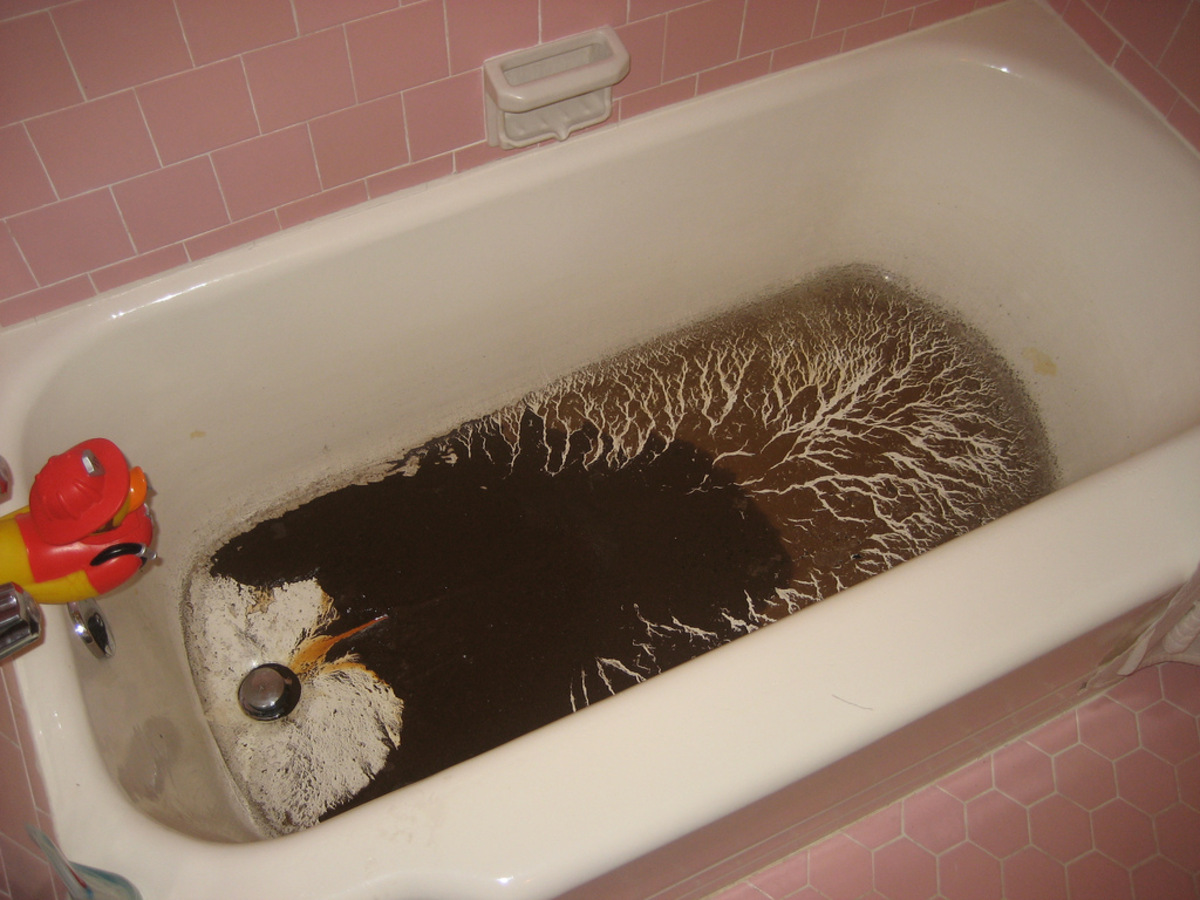Your Comprehensive Guide: Waste Rising Through the Bathtub
Your Comprehensive Guide: Waste Rising Through the Bathtub
Blog Article
The article author is making a number of good annotation on What to Do if Sewage Starts Coming Up Through Your Bathtub overall in this post in the next paragraphs.

Sewer back-up in the bath tub can be a traumatic and unhygienic issue for any home owner. Not just is it inconvenient, yet it likewise presents serious health and wellness threats and suggests underlying issues with the plumbing system. Comprehending why sewage is turning up through the tub is critical for taking suitable action to address the problem efficiently.
Intro to the Problem
Common Reasons for Sewage Back-up
Blockages in the Sewage System Line
Among the most typical sources of sewer backup is a blockage in the drain line. This can occur due to the buildup of debris, oil, or international objects in the pipes, stopping appropriate circulation and creating sewage to back up into your bathtub.
Tree Origin Intrusion
Tree origins looking for wetness and nutrients can penetrate drain lines via little splits or joints. Gradually, these roots can grow and increase, causing substantial damages to the pipelines and causing sewer backup problems.
Understanding the Problem
When sewage starts backing up right into the bathtub, it's a clear indication of a problem with the drainage system. The wastewater that must be flowing away from your home is rather discovering its way back right into your home, which can result in significant damage and carcinogen.
Prospective Reasons
Several aspects can contribute to sewage back-up in the bathtub. From blockages in the drain line to problems with the plumbing infrastructure, recognizing the source is crucial for finding a service.
Aging Framework
Older homes may have dated plumbing systems that are extra vulnerable to deterioration, fractures, and deterioration. As pipes age, they end up being a lot more vulnerable to leakages and clogs, raising the possibility of sewage back-up cases.
Heavy Rainfall or Flooding
Throughout durations of heavy rainfall or flooding, the sewer system might end up being overloaded with excess water, causing back-ups and overflows. This can lead to sewer supporting right into tubs and various other fixtures inside the home.
Indicators of Sewer Backup
Foul Odors
Undesirable odors emanating from drains pipes or fixtures, specifically in the bathroom, may indicate sewage back-up problems. These smells are often strong and persistent, indicating a trouble that needs immediate interest.
Slow Draining Fixtures
Bath tubs, sinks, and toilets that drain slowly or not in all could be experiencing sewer back-up. If numerous fixtures are influenced at the same time, it's most likely that the problem stems from an usual factor, such as the major drain line.
Gurgling Noises
Unusual gurgling or gurgling noises coming from drains pipes when water is running in other places in your house are a sign of air trapped in the plumbing system. This air buildup can result from sewer backup and ought to be examined immediately.
Health Dangers Connected With Sewer Backup
Contamination of Water System
Sewer back-up can contaminate the supply of water in your house, positioning a serious wellness risk to you and your household. Direct exposure to infected water can lead to intestinal issues, skin infections, and other ailments.
Mold and mildew Development
Dampness from sewage backup can create excellent problems for mold and mildew growth in your house. Mold spores can worsen respiratory problems and cause allergies in delicate people, making prompt cleanup important.
Spread of Illness
Sewer consists of dangerous germs, infections, and bloodsuckers that can cause a variety of conditions, including hepatitis, cholera, and gastroenteritis. Coming into contact with sewage or polluted surfaces puts you at risk of infection.
Cleaning Up After Sewer Back-up
Sanitation Procedures
Extensively sanitize and disinfect impacted areas after sewer backup to remove harmful bacteria and avoid mold development. Use appropriate cleaning products and safety equipment to make sure risk-free and efficient cleaning.
Reconstruction of Impacted Areas
Repair any kind of damages to floor covering, walls, or fixtures triggered by sewage backup. Depending upon the degree of the damage, you may need to replace carpets, drywall, or other products to recover your home to its pre-loss problem.
Immediate Actions to Take
Turning Off Water
In case of sewage back-up, it's vital to switch off the water to stop additional contamination and damage. Situate the main water shutoff valve in your house and shut it off till the problem can be solved.
Speaking To an Expert Plumber
Handling sewage back-up is not a do it yourself task. Call a licensed plumber with experience in dealing with sewage-related issues to examine the scenario and carry out necessary repair services or cleanups.
Staying Clear Of Contact with Polluted Water
Up until the sewer back-up is solved, avoid contact with polluted water to avoid the spread of germs and virus. Put on safety equipment if you must be in the afflicted location and clean your hands extensively later.
Preventive Measures
Regular Upkeep of Sewage System Lines
Set up regular evaluations and maintenance of your sewage system lines to determine and attend to potential concerns before they rise into major troubles. This can include cleaning particles, checking for tree origin intrusion, and repairing any type of broken pipelines.
Setting Up Backwater Valves
Take into consideration installing backwater shutoffs in your plumbing system to stop sewage from receding into your home throughout durations of heavy rainfall or flooding. These valves instantly close when water starts backing up, protecting your residential or commercial property from contamination.
Proper Disposal of Home Waste
Prevent flushing anything besides toilet tissue and human waste down the bathroom to prevent clogs and clogs in the sewage system line. Dispose of grease, oil, and various other house chemicals properly to minimize the risk of plumbing troubles.
What To Do If Sewage Starts Coming Up Through Your Bathtub
Sewage coming up through your bathtub is more than just gross. It poses a major health risk as sewage contains harmful bacteria and microorganisms that can be dangerous if exposed to them. While your tub or shower will certainly need a deep cleaning when this occurs, you’ll first need to get to the root of the issue.
If you notice sewage coming up through your bathtub, research Cherry Hill, NJ, licensed plumbers right away to get it fixed.
Why Sewage Is Coming Up Through Your Bathtub
The most common reason for sewage coming up through your bathtub is a clogged sewer line. All the sinks, toilets, and tubs connect to a single drain pipe that leads to the sewer line under your house. This drain line carries all wastewater and sewage away from your home to the city’s sewer system.
When the sewer line becomes clogged or blocked, wastewater has nowhere to go but back toward your house. This results in sewage coming up through your drains, often starting with your tub or shower.
The sewer line can become blocked by anything, but the most common culprits include:
Hair ? Cooking oils and grease ? Food waste ? Soap particles ? Children’s toys ? Jewelry ? Baby wipes or other non-flushable items ? Dirt ? Rocks ? Tree branches and debris ? Rodents How To Fix A Clogged Sewer Line
When you experience sewage coming up through your bathtub, it’s always best to contact a professional. Attempts to fix a clogged sewer line without experience often lead to more plumbing damage. However, you can try a few things that may loosen blockages in smaller connecting pipes.
Don’t Use A Plunger
Plungers only work to loosen obstructions near the head of the drain or toilet. It won’t be able to reach your sewer line or unclog the blockage.
Turn Off The Water
Turning the water off from the main valve will prevent excess water from flowing into already backed-up areas. This will also keep more sewage from coming up through your drains.
Check Your Vent Pipe
When vent pipes become clogged or blocked, it can lead to problems with the sewer line. By pulling any obstructions out of the pipe, your sewer line should be able to properly drain. The vent pipe can be located on your roof, usually directly over your bathroom.
Snake The Shower Drain And Toilet
Using a drain snake can help break up the object causing a blockage. By snaking both the shower drain and the toilet, you may be able to fix the issue. You’ll know you’re successful if the tub drains all sewage and wastewater.
Call A Professional
If these tactics don’t work, you will need to call a professional plumber. They will perform a camera sewer line inspection to find the source of the blockage and determine the best way to remove it. A professional will use a drain snake or conduct hydro jetting to unblock the sewer line and get things back in working condition.
If the obstacle blocking your drain line has caused any damage, you may also need your pipes repaired or even replaced.
Gurgling While Draining
Listen for gurgling sounds coming from the shower drain or sink, as this is an early warning sign of a clogged sewer line.
Frequent Clogs
If your toilet or other drains continuously become clogged, you need to call a professional to look at it. While you may be able to get the water or waste to drain again, it may only be a temporary fix.

I'm very involved in and I'm hoping you liked the entire blog entry. Remember to take the opportunity to promote this post if you enjoyed reading it. We appreciate your readership.
Book Inspection
Report this page